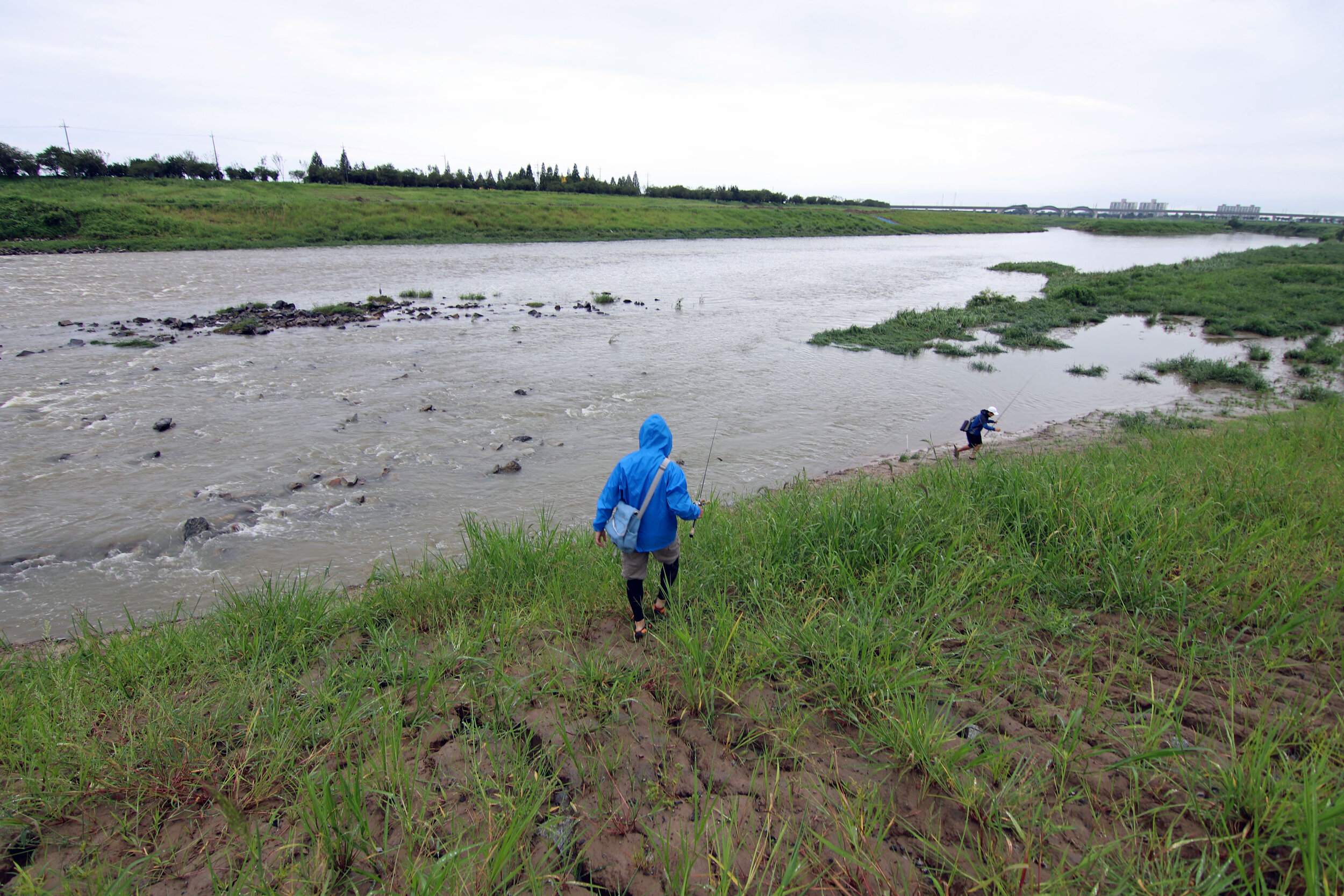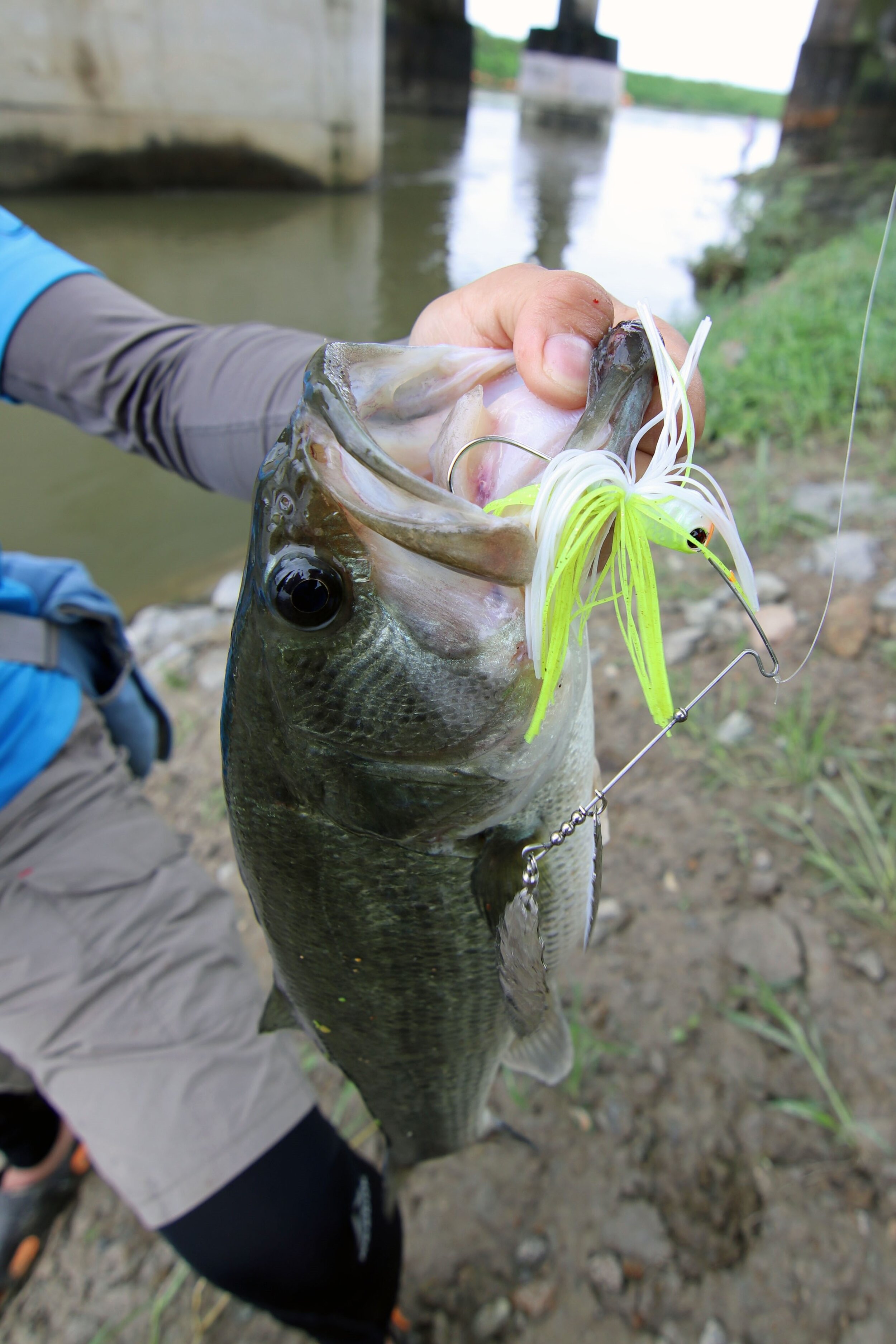The Perfect Storm
By Bertrand Ngim, Ph.D. | January 2019
This radar view screenshot from The Weather Channel app highlights the magnitude of the storms that sweep past most of South Korea, from a west to east trajectory before heading towards Kyushu, Japan.
Nobody likes to talk about the various kinds of stuff that could go wrong in fishing, especially if it’s an overseas trip you’d wished that everything would pan out as you'd hoped. In this installment, however, I’m going to talk about how we fished through a severe storm and the bad calls I’d made in response to rapidly changing conditions during a week of chaotic weather that came close to being the perfect storm known to me in South Korea.
In fact, the fishing had been on fire for us in Gyeongsang Province just a day prior, but news soon broke that a series of storms would sweep past the country, from west to east before hitting Kyushu, Japan. Regrettably, the weatherman was on point! The changes in conditions ended up stalling the bites that had so far been going great leading into the weekend.
We fished a bunch of locations, such as this drainage culvert to anything we could set foot on.
I caught a number of fish beneath this sluice gate, but couldn’t get the big fish to react.
Tight channels like these are home to big bass.
We had originally planned on spending the week ahead fishing the creeks of the Yeongsan River, as well as Geumho Lake near the city of Mokpo, an area that is known as the coveted big bass factory of Korea. I’ve fished the Yeongsan River on a bass boat before, but when it comes to shore fishing the smaller creeks, it is a river that warrants a different approach. To start with, weather and water conditions need to be stable so that more options could become available.
Call it bad timing because by the time the first wave of storms hit, the river turned muddy and water temperatures plummeted, severely cutting my options as most of our shore fishing areas were no longer accessible due to mud runoffs. The scenario might have been different had I reacted to the changing weather conditions much earlier. We should have planned a move to fish areas that hadn’t been affected by the storm. Instead, we spent the night in a Mokpo to fish Geumho Lake the next day where it rained all night long and ended up missing the critical bite window.
Fishing a shallow crankbait (XCalibur XCS 200) in tight channels is fun when you’re catching quality fish.
We found areas where we could catch fish this size all day, but we decided to move on and go in search of quality bass.
The sudden rise in water levels and fall in water temperatures did us no favors the canals that hold big bass.
We found this mudline developing in Geumho Lake the next day, but we were too late for the action.
Heading back north was probably the most logical option only if we could find areas with the right conditions. We ended up sticking around and checked out a few more areas around Geumho Lake before bailing out of the southern provinces totally. We added a few more stops at Gwangju, Gokseong, Imsil, Gunsan and Jeonju along our way up north. The conditions were tough, but we were able to capitalize on the short bite windows around the urban areas.
Hours before the storm, we were fishing shallow crankbaits around an area with a series of sluice gates and came close to landing a 5lb’er. The fish got my line wrapped around a concrete rebar and there was no way I could get my line or the fish out. Ironically, it was my call to downsize the line on my shallow cranking setup, from 14lb-test fluorocarbon to 12lb-test monofilament to improve hook-up ratio. It turned out to be a bad call because largemouths in the creeks are hard fighters, especially those that hunt around heavy current. I could have landed the fish on my 14lb-test fluorocarbon.
Dead carps and dead baitfish! The changes in salinity in Geumho Lake resulted in fish kills.
We even fished under an overpass outside the city of Jeonju!
I caught this postspawn fish on weightless Texas-rigged 5” Senko in muddy water conditions.
Walking slick and steep muddy banks have never been so easy when it became a week long routine.
The short-lived window of opportunity came and went as soon as the subsequent wave of storms hit. We were fishing for largemouth in a semi-brackish water tidal system that is highly susceptible to changes in water conditions after heavy rainfall. Nevertheless, those opportunities would also fade away by the time we left the Geumho Lake area for good.
Relatively unknown outside Korea, Geumho Lake is a large coastal reservoir that is well-known for producing some of the country’s biggest largemouths. It is a semi-brackish water fishery that is home to a variety of saltwater species such as shad, sculpin and even carp that gravitate around the floodgates in the southern shores where we had planned to fish.
Unfortunately, all of our key areas along the shoreline were affected by mud runoffs. More so, the influx of freshwater had also altered the salinity which explains for the fish kills in the vicinity.
I pulled a number of hard fighting river largemouth bass around this massive bridge pilling.
They may be small, but river largemouths like this can get your spinnerbaits straightened!
I would like to be back to fish this riprap bank again when conditions are right.
Heading back north to fish the areas behind the storms might seem like a good idea at first, but we were actually headed straight into post-storm conditions. As a case in point, the first three of our urban fishing areas in Gwangju, Gokseong County and Imsil County all resulted in zero bites.
Despite the gloom, we caught some quality bass in Geum River near Gunsan city. We found several muddy water areas in Mankyung River near the city of Jeonju where we caught quality fish from a moving school of largemouth around a bridge piling.
I relied on a mix of shallow crankbaits, spinnerbaits and 5” Senko. The shallow crankbait bite started pretty well in Yeongsan River, and I was able to produce consistent results fishing around a mix of bank vegetation and hard cover on an XCalibur XCS 200.
I had to switch to a heavy-wire spinnerbait in areas where we found bigger fish.
River largemouths pull and fight as hard as smallmouths.
The Neko-rig gets the job done!
I would switch to a Texas-rigged 5” Senko in areas that warrant a slow, finesse presentation. For instance, we were fishing Geum River right after a rainstorm where the water was extremely muddy. Switching to Senko and pitching those into current breaks around the sluice gates yielded some positive results.
My biggest fish of the week came on an Intruder series 5/8oz. double-willow spinnerbait by Japanese spinnerbait producer Trinity. The Intruder is a spinnerbait that can take some serious abuse and it is my top choice spinnerbait when I am targeting hard pulling fish.
Fishing in storm hit conditions in South Korea may not be the most enjoyable thing I’ve done as an angler, but it was surely an eye opening experience from a shore angler’s perspective. Timing is everything, especially when you’re shore fishing on areas of shoreline that might get cut-off by runoffs after heavy rainfall.
Ultimately, whatever the weather hurls at you, make sure you are well geared and clothed for the conditions. Make full use of weather apps such as The Weather Channel and Weather Underground to get the latest forecasts and to plan your approach around areas of bad weather.
Don’t get me wrong, OSP makes great spinnerbaits, but regular spinnerbaits don’t hold up against hard fighting river largemouths.
Japanese spinnerbait producer Trinity may not be a household name, but their ‘Intruder’ series spinnerbaits can take some serious abuse and have immense fish drawing power. This is a 5/8oz., double-willow version I had paired on 14lb-test fluorocarbon.




















